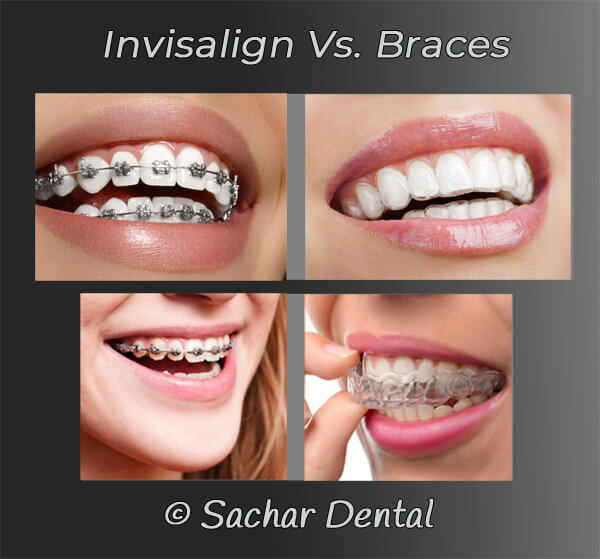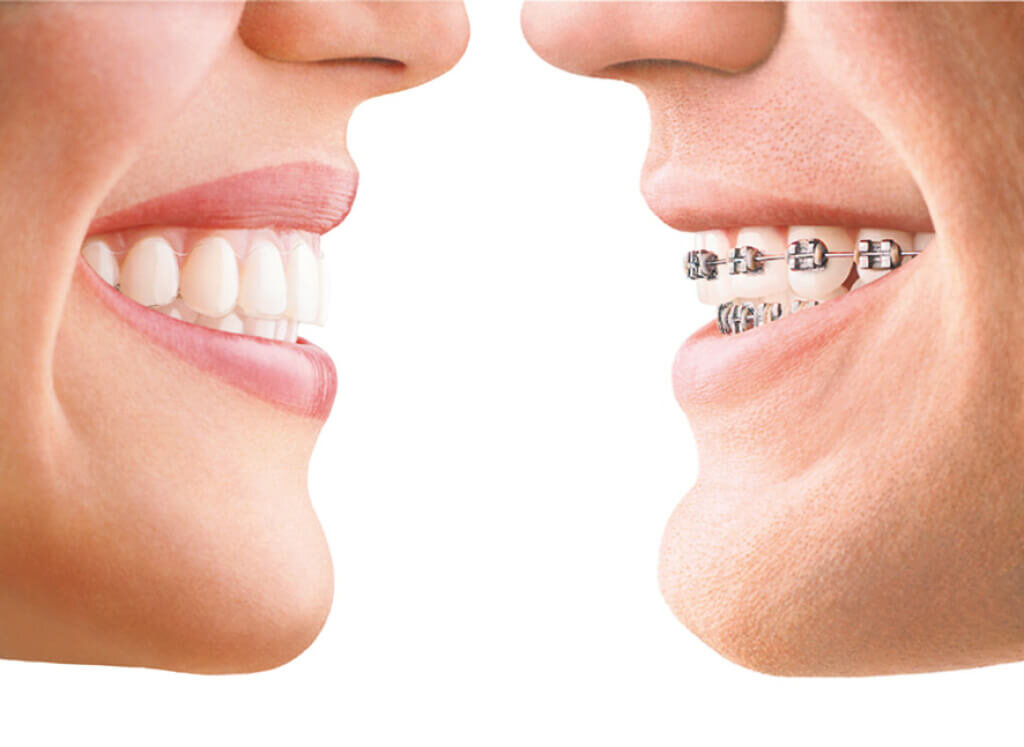The Cost of Invisalign: Understanding the Investment in Your Smile
The Cost of Invisalign: Understanding the Investment in Your Smile
Blog Article
Invisalign vs. Standard Dental braces: Which Option Is Right for You?
When taking into consideration orthodontic treatment, the selection between Invisalign and conventional dental braces presents numerous important factors that warrant careful examination. Invisalign supplies a discreet alternative with removable aligners, while standard dental braces give a more visible yet efficient remedy for severe misalignment. Each alternative encompasses unique benefits and drawbacks connected to aesthetic appeals, convenience, therapy duration, and expense. Comprehending these nuances is important for making an educated choice that aligns with your individual preferences and lifestyle. The concern stays: which option will best meet your orthodontic needs and expectations?
Review of Treatment Alternatives

On the other hand, typical braces include metal brackets and cords that are bound to the teeth. This technique uses continuous pressure with time to achieve placement. While reliable for complex orthodontic problems, traditional braces need normal check outs for changes and can pose difficulties in keeping dental hygiene because of the difficulty of cleaning up about brackets and cords.
Both choices have their merits, and the choice commonly hinges on certain oral conditions, lifestyle preferences, and patient compliance. Inevitably, consulting an orthodontic specialist is critical for figuring out one of the most suitable therapy plan customized to individual needs. Recognizing the nuances of each alternative can significantly influence the general success of orthodontic treatment.
Visual Considerations
A substantial factor influencing the selection in between Invisalign and traditional braces is the visual allure each treatment provides. Invisalign aligners are crafted from clear plastic, making them virtually unseen when put on. This discreet look is particularly appealing to grownups and teenagers who might feel awkward about their orthodontic therapy. The capacity to keep a natural smile throughout the placement process can substantially boost the person's self-confidence in social and expert setups.
On the other hand, typical dental braces include steel brackets and cords, which can be a lot more obvious. While advancements in orthodontic innovation have resulted in the development of smaller braces and colored elastics, traditional dental braces still keep a more conspicuous account. For some individuals, the visibility of dental braces might prevent them from looking for needed therapy.
Eventually, the selection between Invisalign and typical braces might depend upon individual preferences pertaining to visual appeals. Clients that prioritize discernment commonly lean toward Invisalign, while those who are much less worried regarding presence may go with conventional braces. Comprehending the aesthetic implications of each choice is crucial for making an educated choice that lines up with one's way of life and preferences.
Convenience and Convenience

In regards to convenience, Invisalign aligners are detachable, making it possible for clients to appreciate their favorite foods without limitation and keep optimal oral hygiene. Cleaning and flossing are simplified, as the aligners can be obtained during these regimens, whereas typical dental braces need cautious steering around braces and wires.
In contrast, typical braces necessitate normal modifications, making them much less practical for those with busy routines. On the whole, the convenience and convenience of Invisalign make it an attractive option for lots of people seeking orthodontic therapy.
Treatment Duration and Efficiency
While both Invisalign and standard braces work in fixing oral imbalances, the period of treatment can vary significantly between both options. Usually, Invisalign therapy can take anywhere from 12 to 18 months, depending on the complexity of the instance. The clear aligners work by gradually shifting teeth right into their preferred settings, and routine follow-ups with an orthodontist help make certain development continues to be on course.
In contrast, typical braces usually require a longer dedication, typically varying from 18 months to 3 years. This is because of their set nature and the use of brackets and cables, which can be more reliable for extreme imbalances and complicated situations look at these guys (Invisalign). The therapy efficiency of traditional braces is well-documented, as they enable specific changes and higher control over tooth movement
Eventually, the choice between Invisalign and traditional dental braces might depend upon both the expected treatment period and the certain oral concerns at hand. Consulting with an orthodontist is vital, as they can supply tailored suggestions based on individual needs, guaranteeing the picked method lines up with wanted durations and results.
Cost Comparison and Insurance Alternatives
Price plays a considerable role in the decision-making procedure for individuals taking into consideration orthodontic therapy, whether opting for Invisalign or standard braces. On standard, the price of Invisalign varieties from $3,000 to $8,000, while traditional braces normally set you back in between $2,000 and $6,000. Aspects affecting these expenses include the complexity of the instance, the duration of therapy, and geographical area.
Insurance policy coverage can significantly affect out-of-pocket costs. Many dental insurance coverage plans give partial coverage for orthodontic treatments, yet the specifics can differ widely. It is important for patients to assess their insurance policies to establish the degree of insurance coverage for either option. Usually, typical braces may be more frequently covered by insurance strategies contrasted to Invisalign, which some insurance providers categorize as a cosmetic treatment.
In addition, a number of orthodontic techniques use flexible payment plans, making both therapy alternatives extra accessible. Patients need to ask regarding prospective financing options and discount rates for upfront repayments. Assessing the total cost, including insurance coverage benefits and settlement strategies, is essential for making an educated decision that straightens with both aesthetic choices and spending plan considerations.

Conclusion
In summary, the choice in between Invisalign and conventional braces rests on numerous aspects, consisting of visual preferences, comfort, therapy duration, and cost. look at here Invisalign supplies a very discreet, detachable option that helps with oral health and dietary adaptability, while traditional braces may be preferable for complicated oral concerns and frequently come with a reduced price factor. Eventually, examination with an orthodontist is crucial to assess individual circumstances and determine the most appropriate treatment option for accomplishing optimal oral placement.
When considering orthodontic treatment, the option view publisher site in between Invisalign and typical braces provides a number of crucial aspects that warrant careful examination.Contrasting Invisalign and conventional braces reveals distinct therapy alternatives for orthodontic improvement.While both Invisalign and typical dental braces are reliable in correcting oral misalignments, the period of treatment can vary dramatically between the 2 options.Cost plays a considerable role in the decision-making procedure for individuals thinking about orthodontic therapy, whether opting for Invisalign or conventional braces.In summary, the selection between Invisalign and standard dental braces hinges on several variables, consisting of aesthetic preferences, comfort, treatment duration, and price.
Report this page